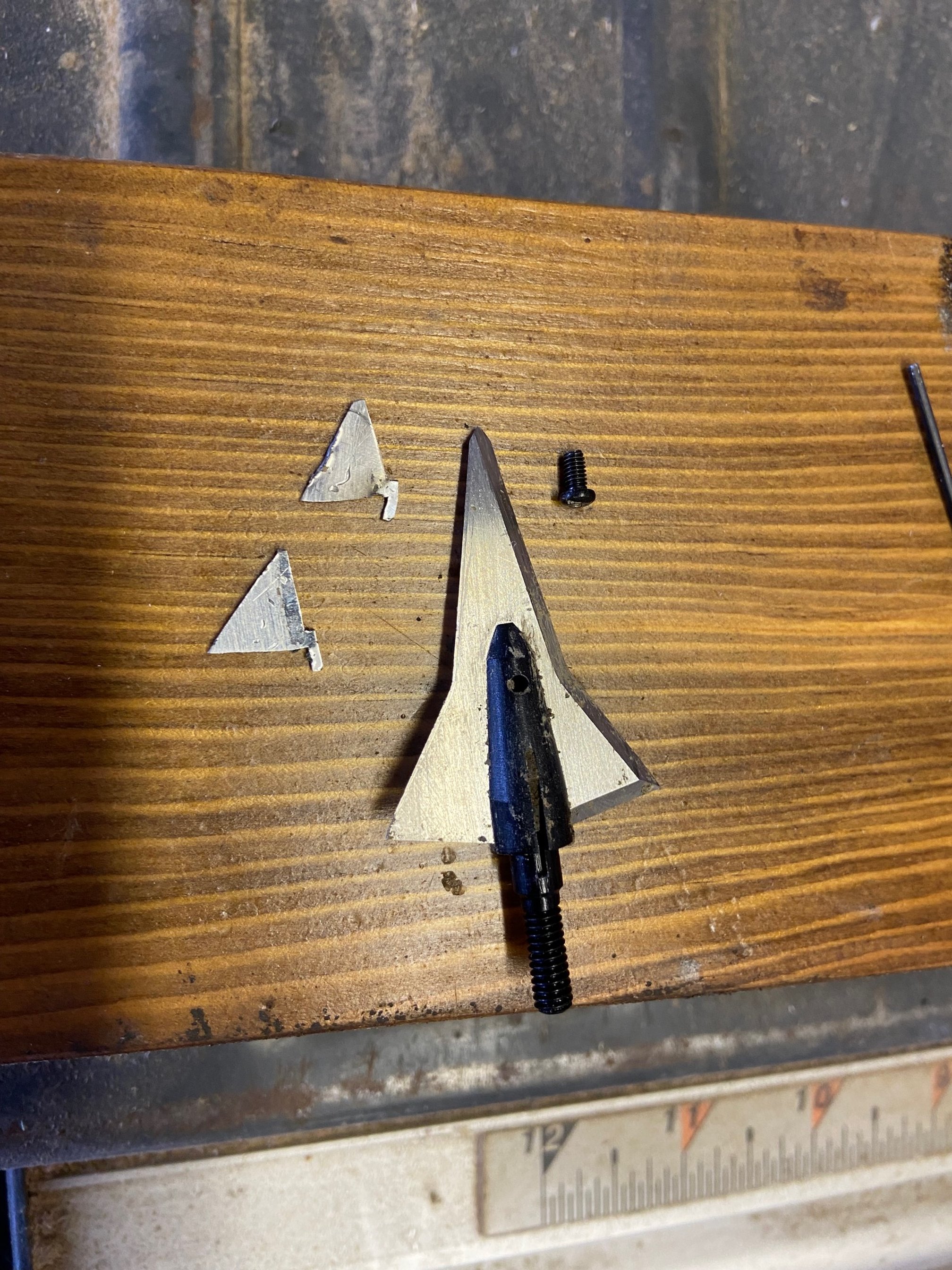Testing the Helix Broadheads FJ4
Testing the Helix Broadheads FJ4!
Earlier this year, I had the chance to attend the Archery Trade Association Show in Indianapolis. I made it a point to stop by and check out all the broadhead offerings there and among those were the Helix Broadheads. Early on when kicking off Broadhead Connection, I had been looking at trying and potentially offering these back in the Strickland era but kept it small to explore the market. Fancy that now in my third year offering our try it before you buy it service that at ATA, I was able to pick one of these up to experience it first hand. I continue to look for the right equipment to expand our trial service to so put it through some paces….
First Impressions of this Broadhead are fantastic. The broadhead selected was the 125 grain FJ4 with bleeder blades. A bright finish, stout look, great thickness in the blades I am always a fan of. Running my thumb over the blade edge, it was very sharp. Back with my time working for KitchenAid, there was a lot of focus on the quality you can feel and I feel the Helix Broadheads FJ4 passes this test.
Shooting the FJ4 into Foam
On to testing! For my initial testing, I was shooting my late season bow at 60 lbs and 31 in draw length, arrow weight was 590 grains with the FJ4 affixed. First up, I wanted to test the FJ4’s performance for flight. After several shots into the foam from 40 and 50 yards, I can attest that I seen no difference in flight. My late season bow is old and rated at 302 IBO so I wanted to also test with my newer bow shooting 343 IBO with 70 draw weight and 31 inch draw length. With the broadhead on, these arrows weighted in at 430 grains. Even shooting this speedier setup, I seen no flight difference and the broadhead tipped arrows were flying true with field point arrows.
Initial Durability Shot
Now, on to the dirt pile! This is where it got interesting! We have a hill of clay and rock from a house project and it makes a great backstop and broadhead test for impact and edge retention. Nothing real objective, but this gritty clay and rocks will dull an edge fast so its still good to feel this difference after only a shot or two with most broadheads. For this testing I used the late season bow/arrow. First Shot, great flight, but upon impact I heard a pretty good twack! As the FJ4 emerged from the dirt, I’d have to say my heart sank a bit. After just one shot into the dirt/rock, I found that one of the bleeder blades had taken the grunt of this rock impact and although the edge looked pretty good yet, the blade had been force back leaving about a 1/16” gap between the bleeders leading corner and the ferrule. After this first shot in the dirt, I also took a few moments to run the blade through some hair on my hand and it didn’t do any shaving. Although not real surprising after 10+ target shots and the dirt pile shot, I have seen better edge retention in many of the other broadheads we offer for testing.
Helix Broadhead FJ4 125 grain tested in the dirt and stones!
Durability Testing Continued
I proceeded to shoot the now FJ2 into the dirt pile 10+ more times to continue testing for the main blade point and edge durability. Part of the way through I added a pile of rocks for a more “impactful” test. After two direct hits with the stone pile, I cleaned it up to inspect again. The main blade held up surprisingly well. There was a little bit of edge chatter and a slight curling in the tip but it was still straight and would sharpen out fairly easily using some courser stone.
The ferrule also showed a couple new white racing stripes but it was intact, only a cosmetic change after all of these shots. I will say that for an aluminum ferrule, this held up very well. The fastener location towards the front of the ferrule keep the tip strong and together through all 10+ more piles into dirt and rock piles without showing any signs of splitting.
The FJ2 and FJ4 broadheads contain some great features. For having a fairly wide profile, I wondered if they would hold with my field point tipped arrows and they did so very consistently. No adjustments needed at both slow and faster speeds. The ferrule design is very robust and there was no separation found after multiple hits on the rocks. The ferrule on the 100-150 grain FJ4 tested is aluminum while the 175-225 grain offerings feature a stainless steel ferrule.
I did feel the blades edge retention wasn’t as good as some others stainless and tool steel options broadheads by other manufacturers in this price point or just a little more, but the overall durability was very good. The little amount of tip curl or edge chatter that was found would be pretty easy to sharpen out.
As for the bleeder blades, they are by design and purpose, not as robust as main blades. Although the picture I took shows some design weakness in the corner by the ferrule locking tab, it would still only add to the cutting potential of the head. With a new 6 pack of bleeder blades running a MSRP of 19.99, it may be a little more cost but in the end, worth having.
I do feel these are quality broadheads so the question remains, would you want to experience them for a week using our service? If so, let me know! I feel these would be a durable addition to the line up but ultimately we expand as you share requests and feedback!
Adam





